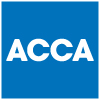3 min readWith less than a month left of the current tax year, it is time to consider end of year tax planning opportunities.
Pension and Gift Aid contributions
Pension contributions and gift aid contributions made prior to the end of the tax year can help mitigate your tax liabilities – even more so when your income is near certain thresholds. For example, your personal allowance is reduced by £1 for every £2 that your income exceeds £100,000. This means that for the income band from £100,000 to £123,700 the effective rate of tax is an eye-watering 60%. The flip side to this is that if your income is within this band you will get tax relief on pension contributions and gift aid payments at 60%.
Another scenario where additional relief is available is in respect to the withdrawal of child benefit. This occurs when the highest earner in the household’s income exceeds £50,000 and the benefit is clawed back at a rate of 1% for every £100 of income in excess of £50,000. The benefit is fully withdrawn when the individual’s income exceeds £60,000. Pension contributions and gift aid payments within this band of £50,000 and £60,000 will, therefore, attract a higher rate of effective relief. The rate of relief will depend on the number of children you are claiming benefit for.
Tax Efficient Investments
The end of the tax year is the perfect time to consider making tax efficient investments:-
ISAs
A range of ISAs are available to savers, including the Lifetime ISA for those under the age of 40; the Help to Buy ISA for first-time homebuyers; and the Junior ISA for individuals aged under 18.
Savers are able to invest in any combination of cash or stocks and shares, up to the overall annual subscription limit of £20,000. An individual may only pay into a maximum of one Cash ISA, one Stocks and Shares ISA, one Help to Buy ISA, one Lifetime ISA and one Innovative Finance ISA
Venture Capital Trusts (VCT)
These are investment vehicles that are invested in small higher-risk trading companies.
Investments in VCTs attract an income tax relief of 30% of the amount invested. This tax relief will be recouped if the investment is sold within 5 years.
Dividends and capital gains are tax-free.
The maximum annual investment for a taxpayer is £200,000.
EIS/SEIS
These are tax advantaged schemes that involve direct investments into small higher-risk trading companies.
EIS shares attract income tax relief of 30% and SEIS shares attract income tax relief of 50%. The relief is clawed back if the shares are sold or if there is a disqualifying event within 3 years.
Any gains on the shares are tax-free provided they are held for a minimum of 3 years and in most cases are fully relieved from Inheritance tax if held for two years.
In addition to the above, capital gains tax on gains invested in EIS shares where the relevant disposal was either 36 months prior to or 12 months after the EIS investment can be deferred until the subsequent disposal of the EIS shares.
The maximum that can be invested in EIS shares annually is £1M (or £2M for knowledge intensive companies) and for SEIS shares the limit is £100,000.
Inheritance Tax (IHT)
There is an annual £3,000 IHT gift exemption and you can also utilise any unused exemption from the previous year. Gifts covered by the exemption will fall outside of your estate immediately for IHT purposes.
There is also a £250 small gift exemption which allows you to give up to £250 annually to any number of friends and family. Again qualifying gifts will fall out of your estate immediately for IHT purposes.
Gifts to individuals that are not covered by the exemptions are potentially exempt transfers and you would have to survive the gift by seven years for them to fall outside your estate.
Capital Gains Tax
Each individual has a capital gains tax exemption of £11,700 for the year ended 5 April 2019. If it is not utilised then it is lost.
If you have investments standing at a gain you may wish to you consider making an appropriate disposal to utilise the annual exemption.
Alternatively, you may have already made gains in excess of the annual exemption and look to crystallize a loss prior to 5 April to offset against the gain.
Care should be taken if you are looking to bed and breakfast a share (i.e. sell the holding and then repurchase it shortly afterwards). If you repurchase the share within 30 days of the disposal then this purchase is matched with the recent disposal for tax purposes so is unlikely to crystallize a gain or loss as intended.
You could still dispose of a shareholding then immediately have your spouse purchase the same shareholding or alternatively, a SIPP could purchase the shares if you have one.
Loucas can help you to build a tax-efficient financial plan that ensures you are making the most of the reliefs and allowances available to you. If you would like to discuss any of the issues raised in this guide please call 01622 758257.




